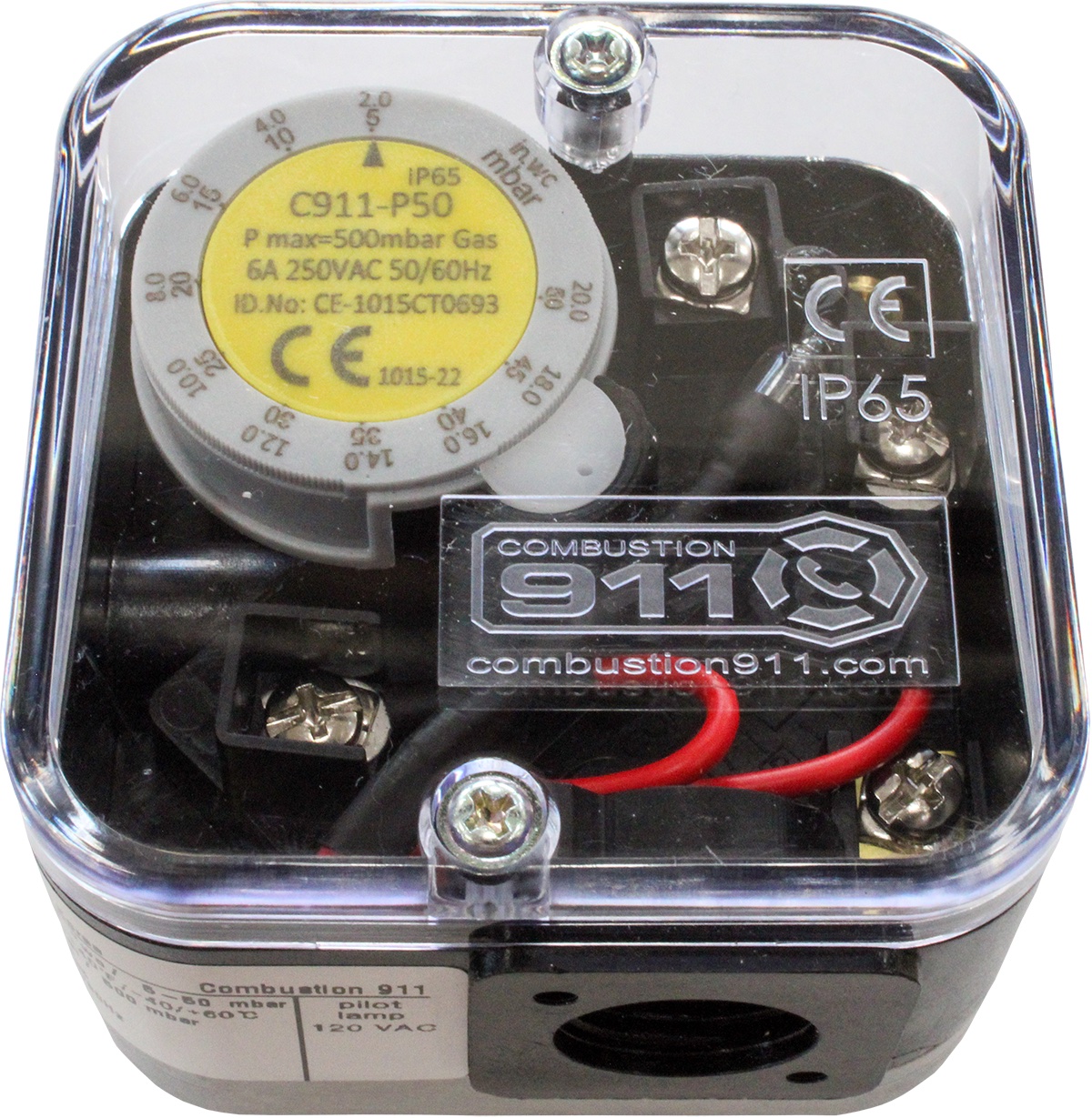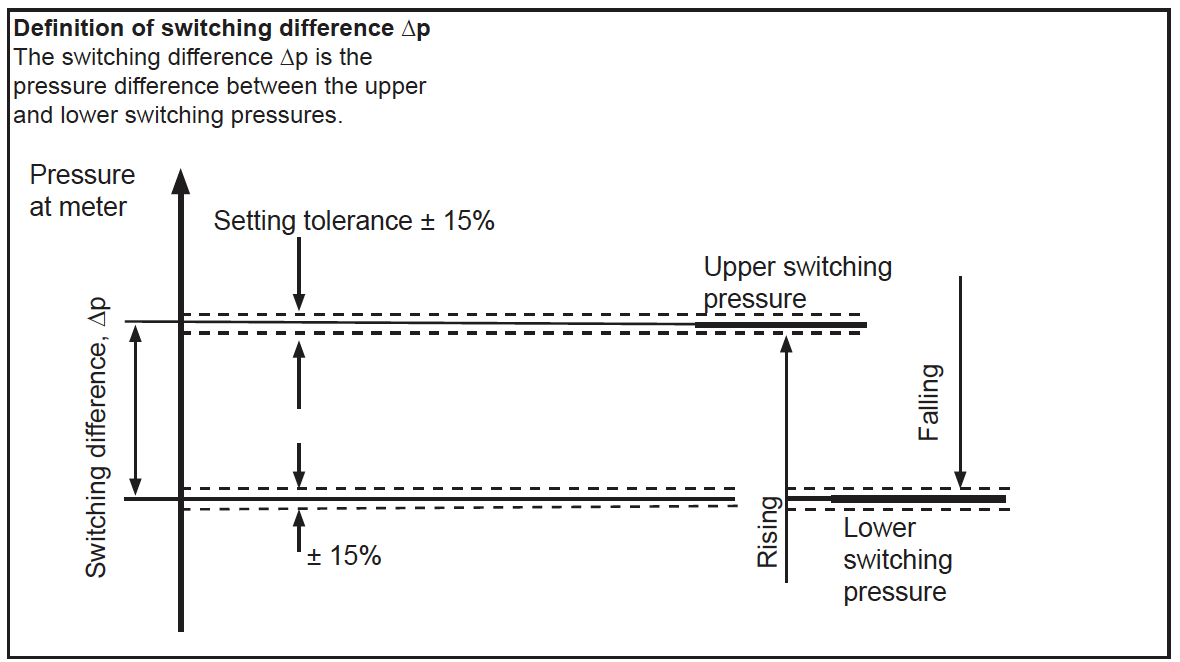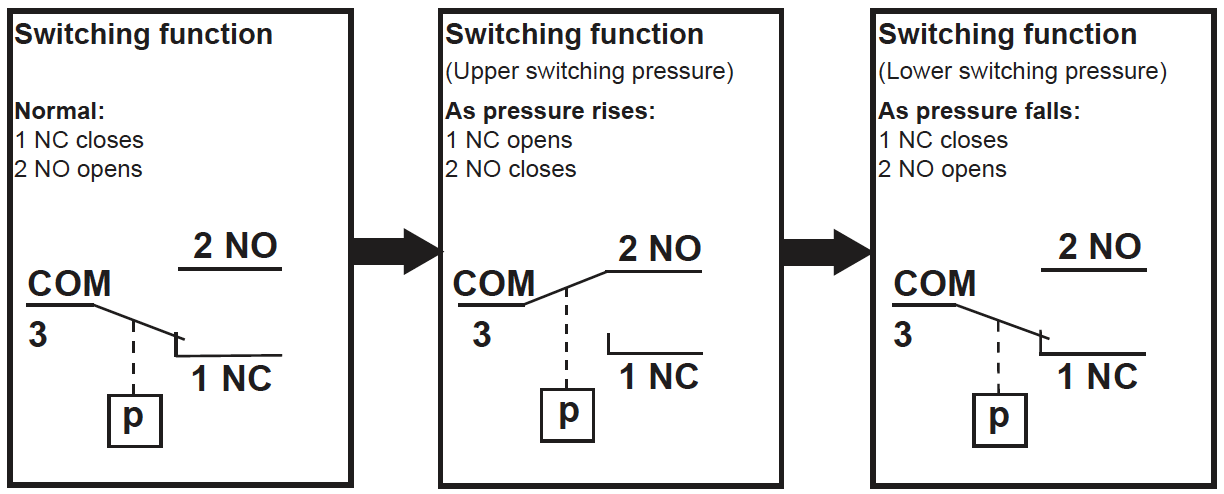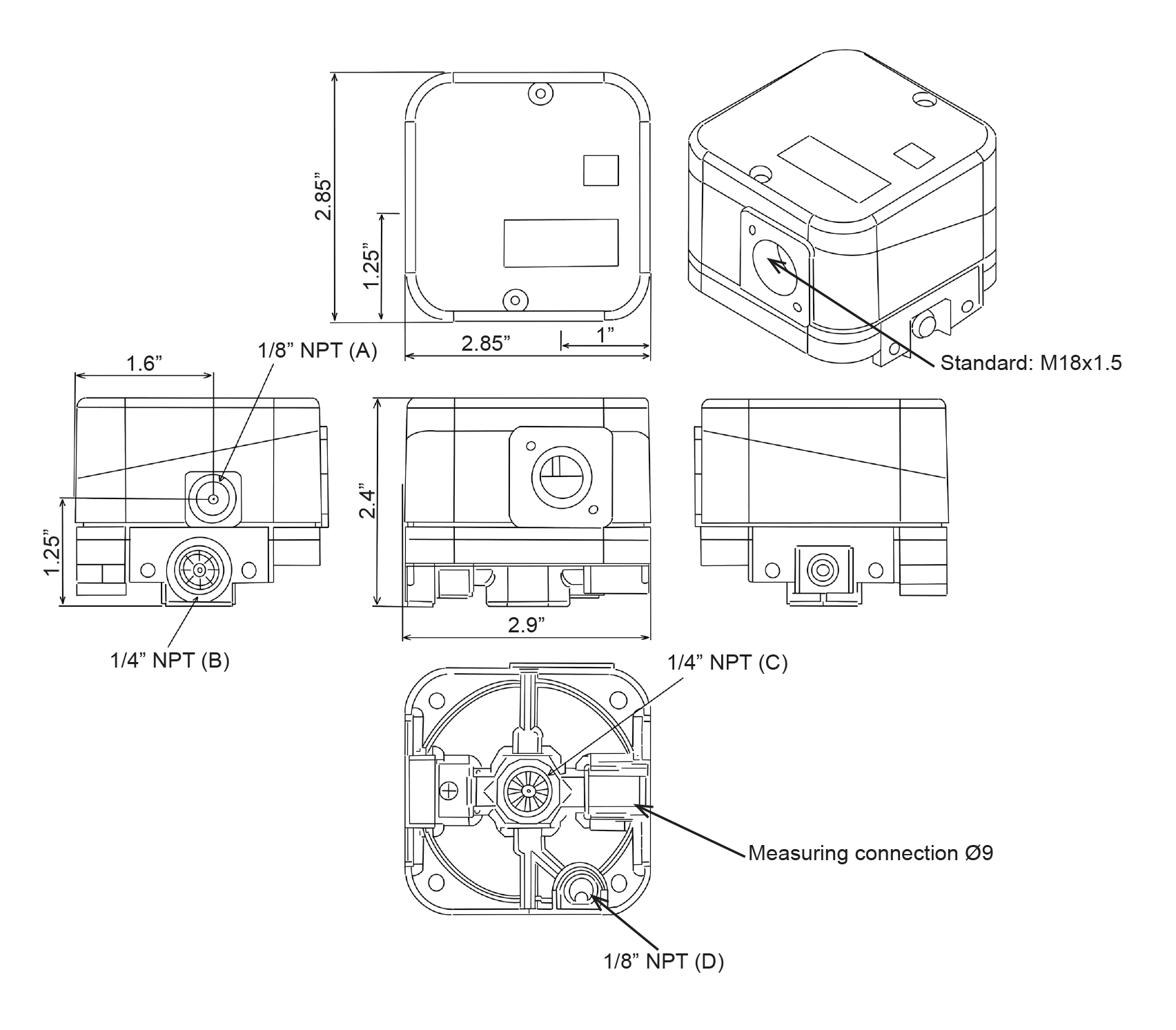Say hello to our new automatic reset pressure switch! The C911-P is FM Approved for use with gas and air in industrial combustion systems. They’re designed to detect rising, falling, and differential pressure. Best of all, they’re in stock and available to ship fast from Kent, OH.
What does a pressure switch do?
A pressure switch is used in industrial combustion systems as a link in the safety chain. It’s purpose is to prevent the system from running or to shut the system down if pressure conditions are not within safe operating parameters.
A pressure switch is one that closes an electrical contact when a certain set fluid pressure has been reached at its input. The switch may be designed to make contact either on pressure rise or pressure fall. The set point is the threshold; pressure must not rise above the set point of a switch wired for detection of rising pressure. Pressure must not fall below the set point of a switch wired for detection of falling pressure.
A differential pressure switch is one which utilizes a differential air pressure to actuate an electrical switch at a pre-set actuation point (the set point).
The set-point is selected using the dial located beneath the clear cover, shown in the above photo. The main difference between models of C911-P pressure switches is the switching range. The switching range is the range within which the set point may be selected.
Pressure switches are required by NFPA86 in several positions of the combustion system. Each of these pressure switches must be satisfied, otherwise the system is not allowed to start, or is required to shut down.
Common gas pressure switches
The two positions where a pressure switch can always be found on the main gas manifold are usually referred to as the Low Gas Pressure Switch and the High Gas Pressure Switch.
The Low Gas Pressure Switch monitors minimum gas inlet pressure required for the safe operation of the combustion system. If the gas inlet pressure does not meet the minimum pressure required for the system, then the system is not allowed to start. If the gas pressure dips below the min. during operation, then the system is forced to shut down.
The High Gas Pressure Switch monitors the maximum gas inlet pressure allowed for the safe operation of the combustion system. If the gas inlet pressure is higher than the maximum pressure required for the system, then the system is not allowed to start. If the max. gas pressure is exceeded during operation, then the system is forced to shut down.
C911-P pressure switches are suitable for both positions!
Common air pressure switches
The two positions where a pressure switch can always be found on a main air manifold are usually referred to as the Combustion Air Pressure Switch and the Purge Air Pressure Switch.
The Combustion Air Pressure Switch monitors the minimum air pressure required for the safe operation of the combustion system. If the air inlet pressure does not meet the minimum requirement, then the system is not allowed to start. If the air pressure dips below the minimum while the system is in operation, then the system is forced to shut down.
The Purge Air Pressure Switch is used to prove the required air pressure is present to purge the system. This pressure switch must be satisfied for the duration of the purge timer to complete the purge cycle. A complete purge cycle is required in nearly all cases before a system is allowed to restart following a shutdown.
The purge cycle is crucial for flushing out any unused fuel remaining inside the furnace.
C911-P pressure switches are suitable for both positions!
More uses for pressure switches
Some systems use a pressure switch in tandem with a tightness control device to test the safety shut-off valves on the main gas manifold for leaks.
You may also find a pressure switch wired to a valve installed to allow excess pressure to escape (vent to atmosphere) if there’s too much pressure built up in the line.
Our C911-P pressure switches are suitable for both situations!
C911-P pressure switch features
The new C911-P pressure switches feature 6 different pressure ranges: 0.16 – 1.2 “WC, 0.2 – 2 “WC, 0.8 – 4 “WC, 2 – 20 “WC, 12 – 60 “WC, and 40 – 200 “WC.
These pressure switches are suitable for detecting rising, falling, and differential pressure.
Use C911-P with natural gas, propane gas, or air.
A tight hysteresis means you can count on the C911-P for repeatability and accuracy.
All models are feature a 110V lamp to indicate the state of the switch. More lamp options are coming soon!
All models feature a strainer at the inlet, to prevent contamination.
These units feature an enclosure rating of IP65, for protection against dust and moisture.
We’re working to provide connection options for the M18x1.5 electrical connection! Stay tuned!
For Automation
We believe in automation for all! Visit olstrad.com and contact us to learn how we can help you automate!















